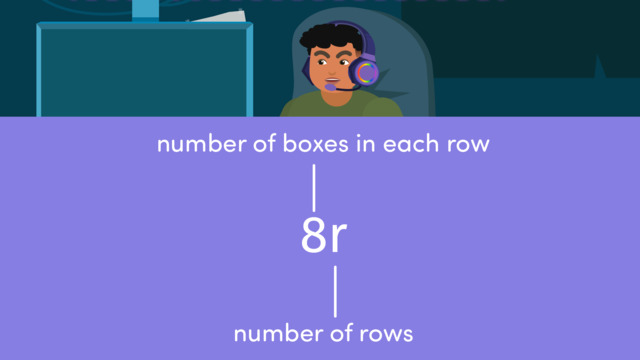Using Variables to Represent Numbers in Expressions
Learning text on the topic Using Variables to Represent Numbers in Expressions
Using Variables to Represent Numbers in Expressions
Welcome to the world of algebra! In this introduction, you'll discover how variables act as placeholders for numbers, allowing us to solve equations and problems that might seem impossible at first. We'll uncover the magic of using variables to represent numbers and understand why this is a crucial skill in mathematics.
Understanding Variables
A variable is a symbol, usually a letter, that stands for a number in mathematical equations and expressions. Think of it like a box that can hold any number you choose. In algebra, we often use letters like "$x$," "$y$" or "$a$" to represent these unknown values.
Check for your understanding!
Writing an Expression with a Variable
Using variables in mathematical expressions helps us represent unknown or changing quantities. Variables can be any letter or symbol and they stand in place of a number we might not know yet or that might change.
Example 1: Weekly Savings Suppose you start with $£3$ in your pocket and plan to save a certain amount of money each week. We can express the total amount of money you'll have after one week as: $3 + x$ Here, "$x$" represents the amount of money you will save each week. This expression can be used to calculate your total savings after adding your weekly savings to the initial $£3$.
Example 2: Buying Apples Imagine you are at a shop buying apples that cost $£2$ per apple. If you want to figure out how much you'll spend without knowing how many apples you'll buy, you can write an expression: $2y$
In this expression, "$y$" is the variable representing the number of apples you decide to buy. The expression $2y$ helps you calculate the total cost if you multiply the number of apples by the cost per apple.
When writing expressions with variables, it's crucial to define what the variable stands for. In the first example, $x$ is defined as the amount saved each week. In the second, $y$ represents the number of apples. By clearly defining these variables, anyone reading the expression can understand what each part represents and how to use it in calculations.
Practise some on your own!
Using Variables to Represent Numbers in Expressions – Summary
Key Learnings from this Text:
- Variables are symbols that represent numbers.
- Simplify expressions by combining like terms.
- Substitute known values into expressions to evaluate them.
- Solve equations by isolating the variable and finding its value.
Keep exploring and practising with variables, and you'll be amazed at how they can help you solve all sorts of mathematical mysteries!
 Do you want to learn faster and more easily?
Do you want to learn faster and more easily?















